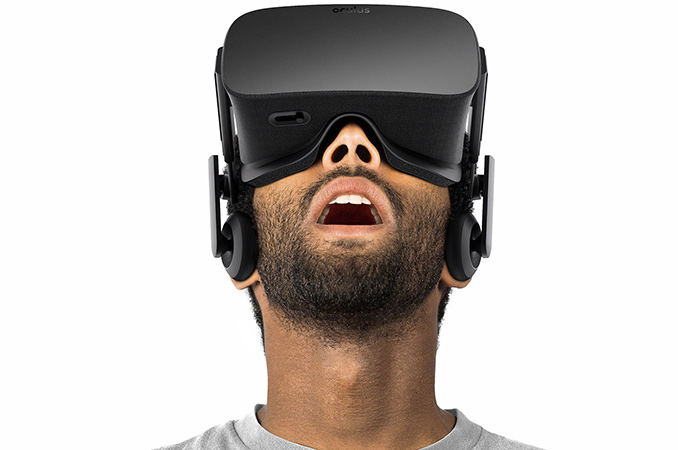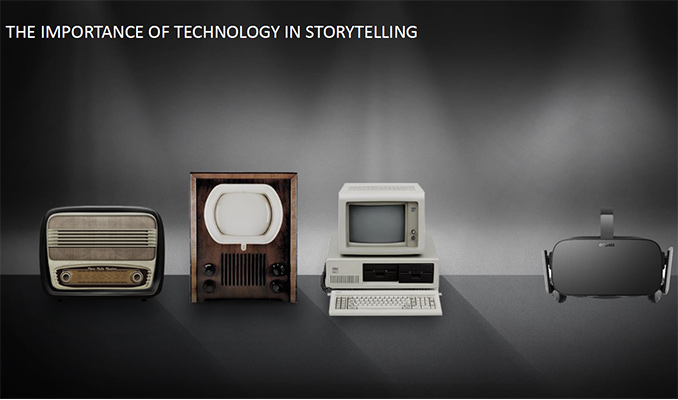AMD and the Associated Press Team Up for Experimental 360° Video & VR News Channel
by Anton Shilov on February 18, 2016 10:00 AM EST
This week AMD and Associated Press have announced a new collaborative project designed to fuel virtual reality journalism. Under the agreement, AP has created a special channel with 360° video and VR content, whereas AMD will provide the news agency appropriate hardware and software tools to create the content. The partnership could bring virtual reality closer to the masses.
The Associated Press news agency was established in 1846 by five newspapers from New York in a bid to share their costs of news coverage of the Mexican-American war. While AP is primarily known for its standards of accuracy, neutrality, and integrity, the organization was an early adopter of multiple emerging technologies to distribute news content. In 1899, the AP used radio to transmit the results of the America’s Cup yacht race; in 1935 the AP established the WirePhoto network, which transmitted news photographs over telephone lines; in the late 1980s, the AP helped to refine Kodak’s first digital cameras and began their usage; in 2006 the organization was among the first major news-outlets to join YouTube. Today, AP believes that 360° video and VR technologies could be the next big thing in journalism.
This week AP opened up its new 360° Videos and Virtual Reality channel to demonstrate what is possible to do using new technologies that essentially put viewers in the middle of the action, allowing them to experience an event from inside despite of physical barriers. By producing 360° and VR content, AP journalists will learn how to better use the new technologies and whether it makes sense to use them at all.
At present, the web site only contains 360° 2D videos and images that can be viewed using a compatible browser, a smartphone, or a VR headset with the help of the Ryot app (for Android or iOS). Eventually, AP’s 360° Videos and Virtual Reality channel will get 3D VR content developed and post-processed using AMD’s LiquidVR software development environment as well as Radeon or FirePro graphics cards. The channel itself is highly experimental, hence, content will be available across multiple platforms ranging from the Samsung Gear VR to the Oculus Rift and the HTC Vive. Right now, AP does not set any technical standards for its 360° videos and VR channel; there are no minimum requirements for resolution, level of details and so on. Many pieces of content will be available on all major platforms, but some will be limited to fully-fledged VR headsets (e.g., the Oculus Rift and the HTC Vive).
For AMD, AP’s 360° Videos and Virtual Reality channel is a way to promote its LiquidVR software as well as GCN GPUs. In addition, AMD will learn through real-world field testing how good its technologies are for VR content creation. If the channel becomes popular among early adopters of virtual reality headsets or among those, who will watch 360° videos using their mobile devices, AMD’s Radeon brand will gain some additional recognition.
360° video and VR technologies for news reporting and documentaries could useful on some occasions. For example, when you need to show excitement of the crowd at a major sport, political or product launch event. However, in many cases typical photos will just do their job for the vast majority of people. Moreover, if we are talking about VR for the masses, we need to keep in mind motion sickness sometimes caused by contemporary VR headsets, which is something that will limit adoption of the technology in general.
Finally, in their announcement the AP notes that their editors will have complete control over the editorial content presented via the new virtual reality channel, which means that we could see very creative way of using 360° video and VR technologies for journalism. Medium is a major thing in story telling. The VR360 channel from AP might just show whether virtual reality is the medium for next-generation journalism or not.
Source: AMD











24 Comments
View All Comments
bill.rookard - Thursday, February 18, 2016 - link
While I understand the VR R&D and development is somewhat important, it's not going to matter much if they don't get their Zen processor line up and running to actually start competing on some level with Intel.Methinks their resources could be better allocated.
BrokenCrayons - Thursday, February 18, 2016 - link
Maybe by getting more deeply involved in VR, AMD is trying to make the company an appealing target for a Facebook buyout. Facebook would then own both the Rift and AMD, putting in a good position vertically integrate virtual reality advertising into social networking.edzieba - Thursday, February 18, 2016 - link
Doesn't seem a good buy for VR: AMD's current processors are trailing behind the single-threaded performance needed for VR. Facebook's DC side might want them for Opteron, but Facebook seem pretty happy to keep Open Compute mostly on Intel for energy efficiency.looncraz - Thursday, February 18, 2016 - link
VR is not inherently single threaded. If anything, it is more parallel.For VR, what matters most, is GPU power... especially crossfire scaling, since one GPU can be used for each eye... and AMD's scaling is already superior to nVidia's.
Zen should erase the single threaded deficit to the point it no longer matters (like in the Phenom II vs Core 2 days).
Refuge - Friday, February 19, 2016 - link
Maybe its just me, but I've given up getting my hopes up for AMD to compete with each new release. Always over promise and under deliver, the exact opposite thing you want to do.As for the single thread performance not being a bottleneck. While you are correct, the latency the CPU creates when tossing out the commands to the one powerful, or two efficient GPU's. Something Intel's processors are much better at with their burst computing prowess.
It is a subtle difference that is hard to notice yourself, but will cause a lot of motion sickness when motion tracking is used. Just another one of the smaller details AMD is going to have to work on if being a VR\AR juggernaut is their goal.
At least that is just my two cents.
webdoctors - Thursday, February 18, 2016 - link
FB buying AMD would be a horrible buyout. FB has 12K employees and a market cap worth of 296B dollars. AMD has 10K employees and a market cap worth of 1.4B dollars.On the balance sheet you'd double the number of employees and not change the value of the company at all. Thats horrible because for a tech company the employees is the biggest line item by far, so you've doubled operating costs!
Better to contract out the work to AMD just like their janitorial staff so they don't have to share their employee benefits. Its the Foxconn business strategy.
BrokenCrayons - Thursday, February 18, 2016 - link
It'd be an inexpensive purchase for Facebook and market cap doesn't not only fails to show the entire corporate picture it also doesn't capture the potential of vertical integration. Besides that, Facebook has huge brand recognition that AMD doesn't currently enjoy which might make their product offerings more appealing. Just think of the potential sales of a Facebook-branded CPU, graphics card, and VR headset or even going one step further and selling full Facebook laptops and desktops. There's also the benefit of diversification that you're overlooking by simply tossing out a single dollar value.JoeMonco - Thursday, February 18, 2016 - link
The only thing a Facebook-branded CPU could be after buying AMD is ARM. But then why bother when they could just get ARM CPUs elsewhere?extide - Thursday, February 18, 2016 - link
Hrmm, a FB buyout of AMD, interesting, I haven't thought of this before. So as far as the single thread perf and energy efficiency, I think with a big money boost from FB, those things could be addressed. Definitely an interesting thought.BrokenCrayons - Thursday, February 18, 2016 - link
It's just a passing thought really. Facebook does have a much more positive brand identity than AMD does. Facebook is associated with being youthful, trendy, and socially interconnected. AMD is often associated with stagnation, operating losses, and mediocre performance on a limited budget.